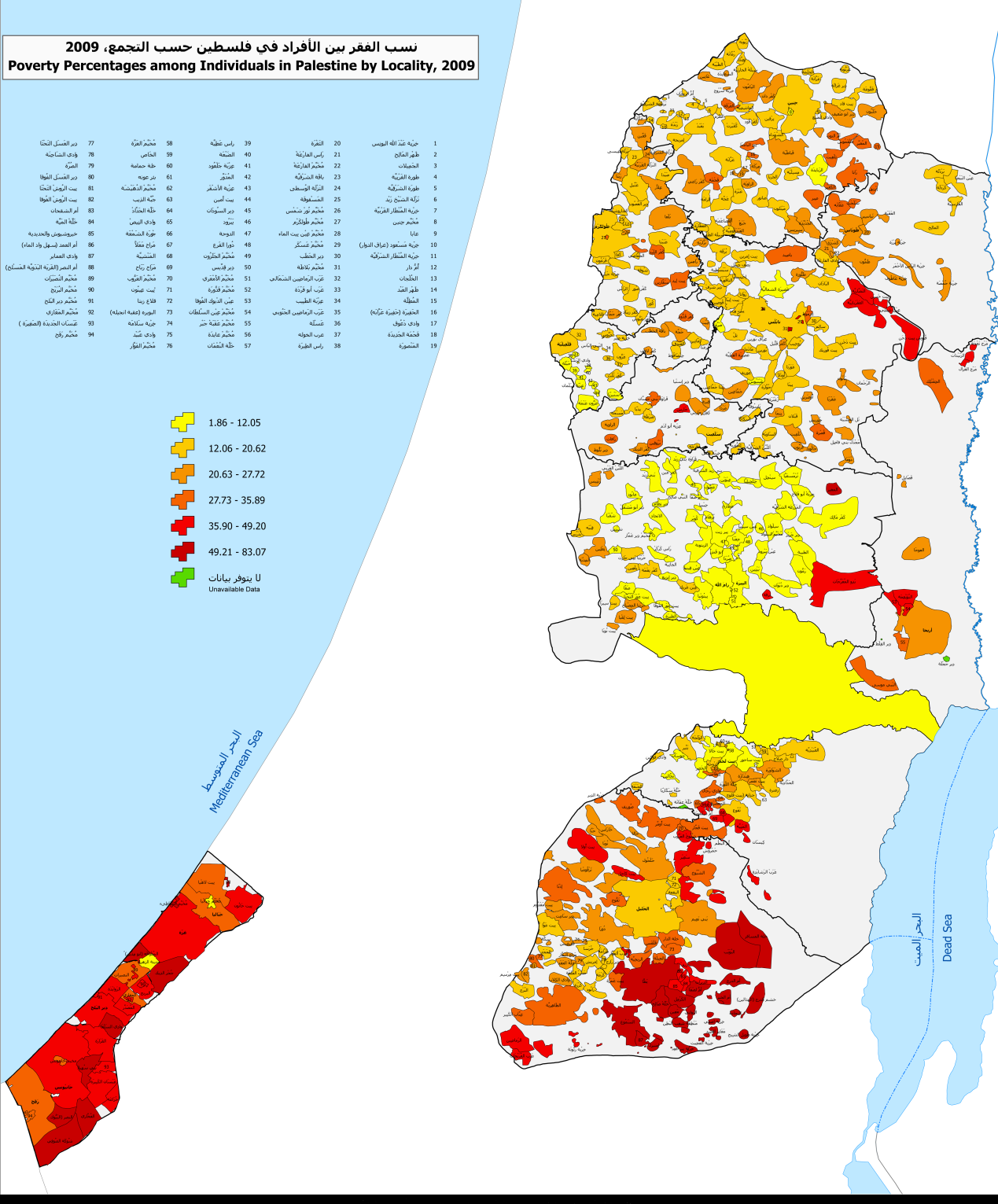Atlas of Poverty in the State of Palestine
It is our pleasure to present to you one of our most important statistical achievements, the Poverty Atlas, which is considered one of the unique and exclusive statistical projects that PCBS has conducted for the first time. It is worth mentioning that such atlas secures detailed information on poverty indicators on the locality level represented in maps that demonstrate clearly the poverty levels of each locality where policy and decision makers can draw policies, draft development plans and initiate social protection networks for the Palestinian localities.
It is important to indicate that the poverty indicators are the most important indicators of socio-economic aspects of the country and that the indicators represented in the maps of the poverty atlas were selected in accordance with the international standards and in abidance to the Palestinian exceptional and unique conditions, particularly, in clarifying the poverty causes and its impact as well. The said poverty maps cover some demographic and social characteristics of the households and individuals, some of health services, education and public utilities available in the Palestinian localities.
Statistics on poverty indicators were first published by PCBS in 1998. Since then, statistics have been published annually based on the data available from the expenditure and consumption survey (PECS), which provides figures for monthly household consumption. The household expenditure and consumption survey (PECS) is the main source of data for calculating poverty indicators in Palestine and data are obtained from the daily record book given to each household in the survey. This survey was implemented by PCBS for the years 1996-1998, 2001 and 2004-2011.
The model-derived poverty rate for the West Bank, is 21.3%, while for Gaza Strip is 37.6%. At the governorate level in the West Bank, poverty rates are as follows: Jericho & Al-Aghwar, at 31.3% has the highest incidence of poverty, while Ramallah & Al-Bireh having the lowest rate of 8.9%. In Gaza Strip, Khan Younes had the highest poverty rate at 45.9%, while North of Gaza had the lowest at 28.2%. On average, the poverty rates in Gaza Strip were much higher than those in the West Bank.
The completion of this project is an important achievement in the history of statistical work in terms of the benefits achieved by using the available data without additional costs and in terms of the potential policies for the development of localities (social protection network, infrastructure, …etc.). Serving Palestinian citizens and policy makers is the ultimate goal of PCBS and its statistical work. Therefore, poverty indicators have been linked with several indicators by locality to ascertain the needs within development plans for these areas.
We hope that the atlas of poverty will assist researchers, policymakers and decision makers, and will be an effective valuable tool in the development of plans and policies. It will also raise awareness of the factors related to poverty in Palestine in order to build programs to protect and meet the needs of the Palestinian society, especially the most vulnerable localities.

 عربي
عربي